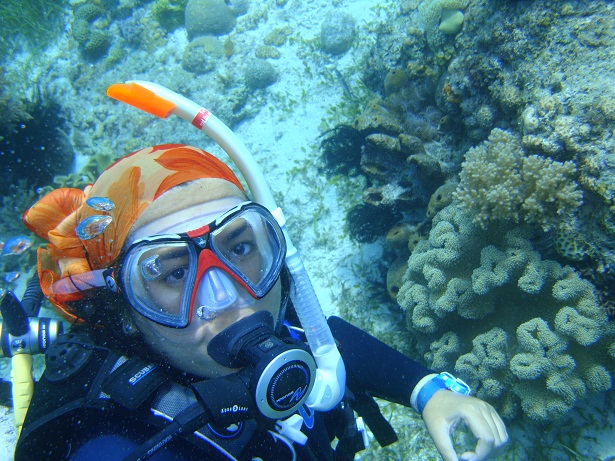There has been a resurgence in nationalism these days. All of us are proclaiming our love for the country, loud and proud. Well, here’s something patriotic for you to do: give those t-shirts with a map a rest and try diving. And while you’re at it, dive in Panglao Island, Bohol at least once in your lifetime.
Seriously. Because a Filipino who has not experienced first hand the beauty of the country’s marine life is definitely missing out on something special.
Panglao in itself is beautiful, without the rowdy crowds of the more popular beaches like Puerto Galera and Boracay (please say it by its full name and not “Bora“ with a rolling “r“ and do not punctuate it with “pa-re“ or “dude” in the end – it‘s like scraping a blackboard with a fork). It’s also your jump-off point to Balicasag and Cabilao islands. Panglao, Balicasag and Cabilao all offer fantastic wall diving. These dives range from easy to normal, with generally calm conditions.
We usually hook up with Sierra Madre Divers, located along Alona Beach. You can arrange as many as four dives a day, boat and equipment, with their team. Sierra Madre also has basic but clean rooms where you can stay during your dive trip. But this seals the deal: their eagle-eyed dive guides (ask for Reggie) can easily spot sea critters for you, from the sought after turtle to the rarely seen ghost pipefish, or the tiny nudibranch.
Crystal clear
The visibility, on a good day (there are rarely bad days in Bohol, I suspect), is amazing. Peer out of the boat and one can already marvel at the corals below.
All sites, particularly Balicasag – being the marine sanctuary that it is – are teeming with life and bursting with color. If these were gardens, I can say that each site is perfectly landscaped, with the artiste paying very close attention to detail. These walls are home to groupers, moray eels, puffer fish, butterfly fish, bat fish, sponges, wrasses, trevally, pygmy seahorses and sea fans, to name a few. An occasional reef shark is an exciting addition to the mix.
In terms of diversity, these are at par with the best in the world.
Schools of jackfish can almost always be expected, their silver scales glittering in the sunlight. Can this be a tactical maneuver to confuse those that prey on them? Because my dive buddy Marc V. and I surely were hypnotized and did nothing but languidly follow them for the rest of the dive.
I hope that the horror stories of other divers cutting off fan corals to put them in aquariums – were just urban myths. Or if these were true, that they’ve put a stop to the practice.
Doing it deeper
With Dive Master Romi, we did a touchdown dive at Doljo Point, the southwestern point of Panglao Island. We remained for a minute or so at 50 meters before gradually ascending to the surface, to prevent pressure-related conditions.
So what’s it like at that depth? Everything’s eerily blue and silent, with just gorgonian fans to keep you company. The sight seeing actually takes place during your ascent. But it’s exhilarating still.
Surface interval is sutokil
Surface intervals were still rich with marine life encounters – there’s kinilaw na galunggong, freshly caught and prepared right on the boat and sutukil – fish cooked in three ways: sugba (broiled), tola (with soup) and kilaw (raw in vinegar).
Now that was one interaction all of us looked forward to.
Thanks to Marc Queyquep, Amy Bayle, Romeo Bonggot, Rylan Lee and James Sumagaysay for the pics!





